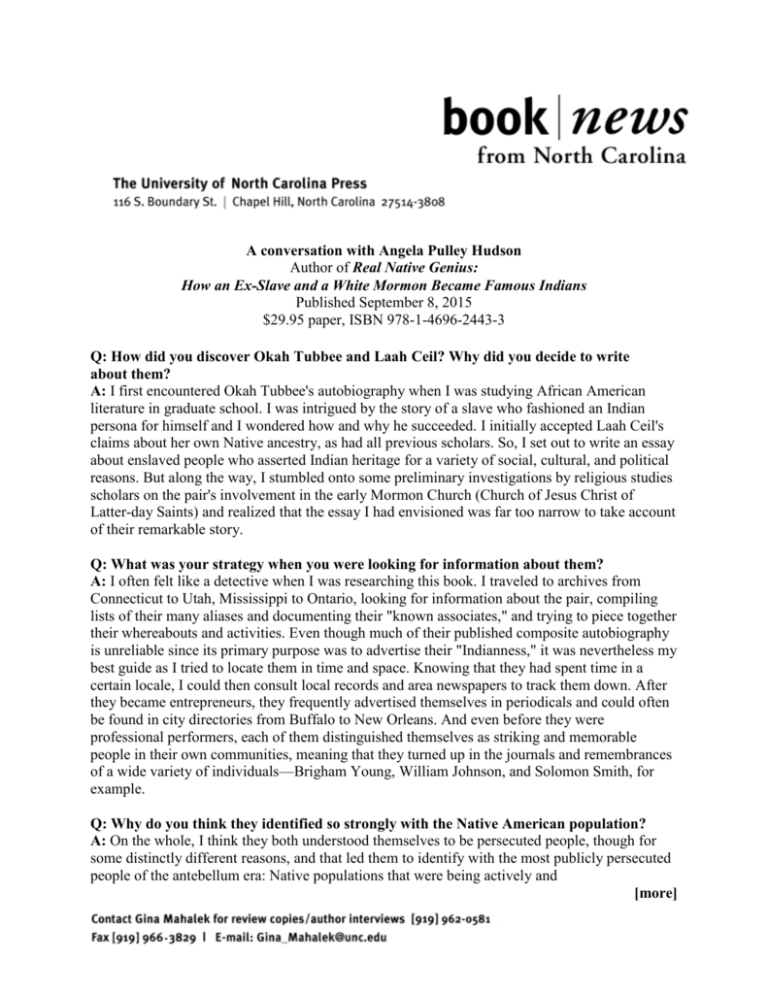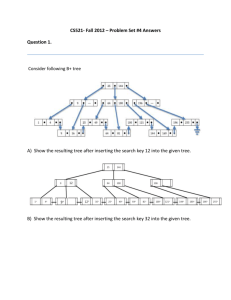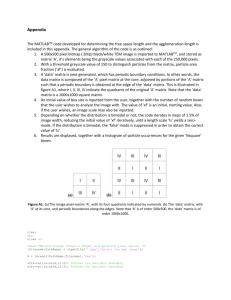REAL NATIVE GENIUS Q&A
advertisement

A conversation with Angela Pulley Hudson Author of Real Native Genius: How an Ex-Slave and a White Mormon Became Famous Indians Published September 8, 2015 $29.95 paper, ISBN 978-1-4696-2443-3 Q: How did you discover Okah Tubbee and Laah Ceil? Why did you decide to write about them? A: I first encountered Okah Tubbee's autobiography when I was studying African American literature in graduate school. I was intrigued by the story of a slave who fashioned an Indian persona for himself and I wondered how and why he succeeded. I initially accepted Laah Ceil's claims about her own Native ancestry, as had all previous scholars. So, I set out to write an essay about enslaved people who asserted Indian heritage for a variety of social, cultural, and political reasons. But along the way, I stumbled onto some preliminary investigations by religious studies scholars on the pair's involvement in the early Mormon Church (Church of Jesus Christ of Latter-day Saints) and realized that the essay I had envisioned was far too narrow to take account of their remarkable story. Q: What was your strategy when you were looking for information about them? A: I often felt like a detective when I was researching this book. I traveled to archives from Connecticut to Utah, Mississippi to Ontario, looking for information about the pair, compiling lists of their many aliases and documenting their "known associates," and trying to piece together their whereabouts and activities. Even though much of their published composite autobiography is unreliable since its primary purpose was to advertise their "Indianness," it was nevertheless my best guide as I tried to locate them in time and space. Knowing that they had spent time in a certain locale, I could then consult local records and area newspapers to track them down. After they became entrepreneurs, they frequently advertised themselves in periodicals and could often be found in city directories from Buffalo to New Orleans. And even before they were professional performers, each of them distinguished themselves as striking and memorable people in their own communities, meaning that they turned up in the journals and remembrances of a wide variety of individuals—Brigham Young, William Johnson, and Solomon Smith, for example. Q: Why do you think they identified so strongly with the Native American population? A: On the whole, I think they both understood themselves to be persecuted people, though for some distinctly different reasons, and that led them to identify with the most publicly persecuted people of the antebellum era: Native populations that were being actively and [more] 2-2-2 Real Native Genius aggressively uprooted and assaulted. But this is a tricky question because without any personal writings (like letters, diaries, etc.) from either of them, it is particularly difficult to assess how deeply and genuinely they felt this identification and how much it evolved as one strategy among others that they used to create opportunities for themselves. Q: What is your opinion on "performing Indianness," specifically in Okah Tubbee and Laah Ceil's case? A: Performing "Indianness" is an American national pastime, a set of practices that were apparent at the Boston Tea Party and continue to appear at modern sporting events and seemingly everywhere in between. Scholarly attention has recently been paid to how Native people have always engaged, shaped, subverted, and refined the performance of "Indianness" for their own purposes. But we have not often made room for considering women and people of color who engage in this practice. And therein lies two important and related concerns: "performing Indianness" was frequently a strategy of resistance against confining social categories, but such performances have in turn had a direct impact on how American Indian people are perceived and treated by others, often re-inscribing narrow stereotypes. Q: What was it about Ceil and Tubbee's performance that made them so successful? A: Laah Ceil and Okah Tubbee were very skilled at giving audiences what they wanted. Whether they were providing blessings to congregants seeking an Indian prophet, presenting concerts before crowds of spectators, or selling Indian cures to desperate patients, they continuously readjusted their performances. But they were not always successful. Once they ran afoul of a few patrons, they were plagued by efforts to discredit their claims to "Indianness." This was particularly true for Okah Tubbee, whose past resurfaced in particularly threatening ways, ultimately ending his stage career and hampering his ability to convince others of his Native identity. Q: In your opinion, what defines the "true" identity of Tubbee and Ceil? A: I work throughout the book to avoid a statement of "true" identity, since I approach identity as fundamentally performative and always in flux. In other words, even when people are not professing their ancestry or making claims about their pasts, they are in some sense always constructing and performing their identity, often unconsciously. Because I believe this is a complex interplay of public behaviors and private thoughts, it is particularly hard to document or define in a satisfactory way. Historians know how to trace and analyze public behaviors. But it is very difficult, if not impossible, to access another person's private thoughts, much less to do so across the distance of time and space, across cultural and social boundaries, or with anything like certainty. Q: Okah Tubbee and Laah Ceil published multiple editions of their joint biography. What were the major differences between those editions? A: The first edition, published in 1848 and attributed to Rev. L.L. Allen, mentioned Laah Ceil's name and alluded to her participation in crafting the text, but did not contain any other information about her or her background. Its primary purpose was asserting Okah Tubbee's claim [more] 3-3-3 Real Native Genius that he had been kidnapped and raised in slavery, despite actually having been born a Choctaw. The second edition, published later in 1848 and attributed to Laah Ceil, included a new section that described her background and youth, though heavily veiled to convince readers of her Indian heritage. It also described their courtship and marriage. The third edition, published in 1852 and attributed to Laah Ceil, incorporated new revelations about Okah Tubbee's medical training, as well as a series of testimonials from former patients affirming his talents as an Indian doctor. Q: What can their story tell us about the American world at the time? How about the world of today? A: Real Native Genius shows how notions about American Indians underlay a wide variety of cultural practices and social realities in the antebellum period. From associations of Indians with freedom (which set them apart from African-descended slaves), to claims about their true origins as a lost tribe of Israel (which underlay the Mormon notion of them as "Lamanites"), to popular cultural fascination with their customs and traits, and a widespread fetishization of Native botanical knowledge in the patent medicine business, Indians—or at least ideas about Indians— were seemingly everywhere. Okah Tubbee and Laah Ceil were shaped by these ideas and then harnessed them to their own purposes, frequently affirming narrow stereotypes about Native people, even as they strove to escape the strictures of their own categorization as a former slave and a Mormon divorcee. Their story requires us to consider the relationship of topics that are usually considered separately: slavery, Mormonism, popular performance, and medicine—and to do so in a way that shows the centrality of ideas about Indians to American culture. In so doing, it should also serve to remind us that identity and identity practices never exist in a vacuum—they are always interwoven with a variety of social and cultural factors, like race, gender, religion, and health, to name just a few. Q: Are there other famous figures you found in your research that you would like to know more about? If so, who? A: While a number of famous figures make appearances in the book, such as Brigham Young, P.T. Barnum, and George Copway, I am more interested in learning about a relatively understudied group of women who made careers for themselves as Indian doctresses during the middle of the nineteenth century. I'm in the process of researching Native and non-Native women, like Laah Ceil, who carved out a niche for themselves by combining folk medical knowledge and midwifery with patent cures and a fair dose of fortune-telling and practical marital advice. I want to know more about how this profession emerged, how the women who practiced it were drawn to it, and how and why their clients sought them out. ### 4-4-4 Real Native Genius This interview may be reprinted in part or in its entirety with the following credit: A conversation with Angela Pulley Hudson, author of Real Native Genius: How an Ex-Slave and a White Mormon Became Famous Indians (University of North Carolina Press, Fall, 2015). The text of this interview is available at: www.ibiblio.org/uncp/media/hudson. PUBLISHING DETAILS ISBN 978-1-4696-2443-3 $29.95 paper Publication date: September 8, 2015 Approx. 264 pp., 7 illus., 1 map, notes, bibl., index http://uncpress.unc.edu/books/12082.html The University of North Carolina Press, www.uncpress.unc.edu 116 South Boundary Street, Chapel Hill, NC 27514-3808 919-966-3561 (office); 1-800-848-6224 (orders); 919-966-3829 (fax) CONTACTS Publicity: Gina Mahalek, 919-962-0581; gina_mahalek@unc.edu Sales: Michael Donatelli, 919-962-0475; michael_donatelli@unc.edu Rights: Vicky Wells, 919-962-0369; vicky_wells@unc.edu











